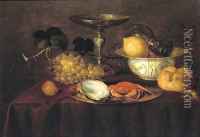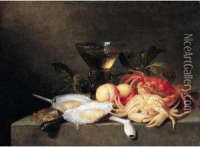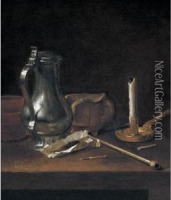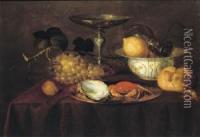Theodoor Smits Paintings
Theodoor Smits was a Dutch artist, born in 1909 and passing away in 1987. His artistic journey began in the Netherlands, where he was part of a vibrant cultural milieu that saw significant changes in art and society between the two World Wars and beyond. Smits, while not as internationally renowned as some of his contemporaries, carved out a unique space for himself within the Dutch art scene through his dedication to exploring the nuances of everyday life and the natural world.
Smits' work is characterized by its diversity, ranging from landscapes and still lifes to portraits and urban scenes. He was deeply influenced by the Dutch artistic tradition, showing an affinity for the meticulous detail and vibrant colors that are hallmarks of the Dutch Golden Age. However, Smits also incorporated modernist elements into his work, experimenting with form and color in ways that bridged the gap between traditional realism and emerging avant-garde movements. This blend of old and new made his work particularly appealing to a broad spectrum of art lovers, allowing him to maintain a successful career throughout the tumultuous mid-20th century.
Throughout his career, Smits remained largely in the Netherlands, drawing inspiration from its countryside, cities, and people. His landscapes often depict the serene and timeless beauty of the Dutch countryside, while his urban scenes capture the dynamic changes of the era with a unique sensitivity. In addition to his paintings, Smits was also known for his graphic work, including etchings and lithographs, which further showcase his versatility as an artist.
Despite his talents, Theodoor Smits did not achieve the same level of fame as some of his contemporaries. However, his work has been appreciated for its contribution to Dutch art, particularly in the way it captures the essence of the country's landscape and character during a period of significant change. Smits' legacy lives on through his contributions to the art world, with his works held in various private collections and occasionally featured in exhibitions dedicated to exploring the richness of 20th-century Dutch art.




